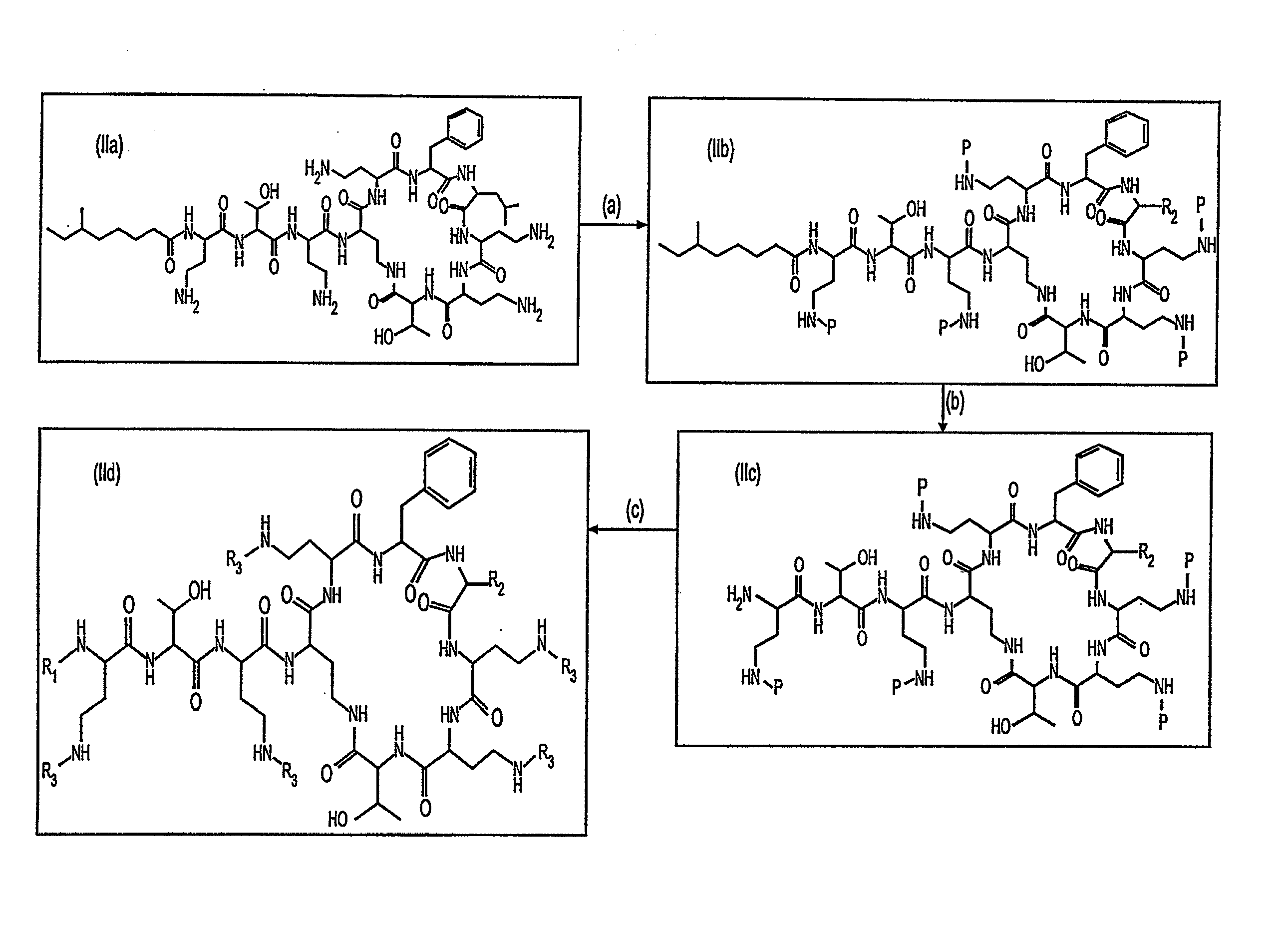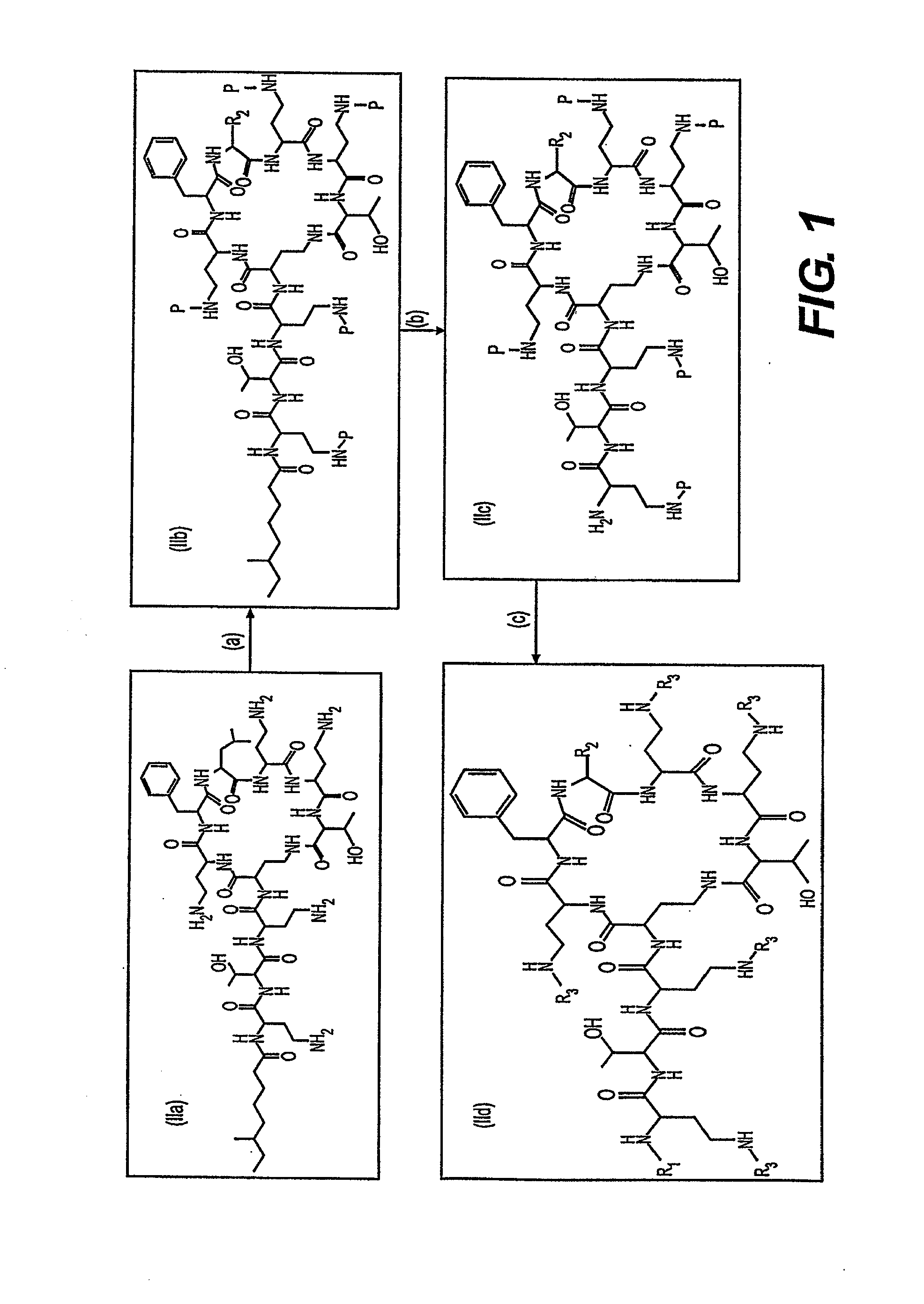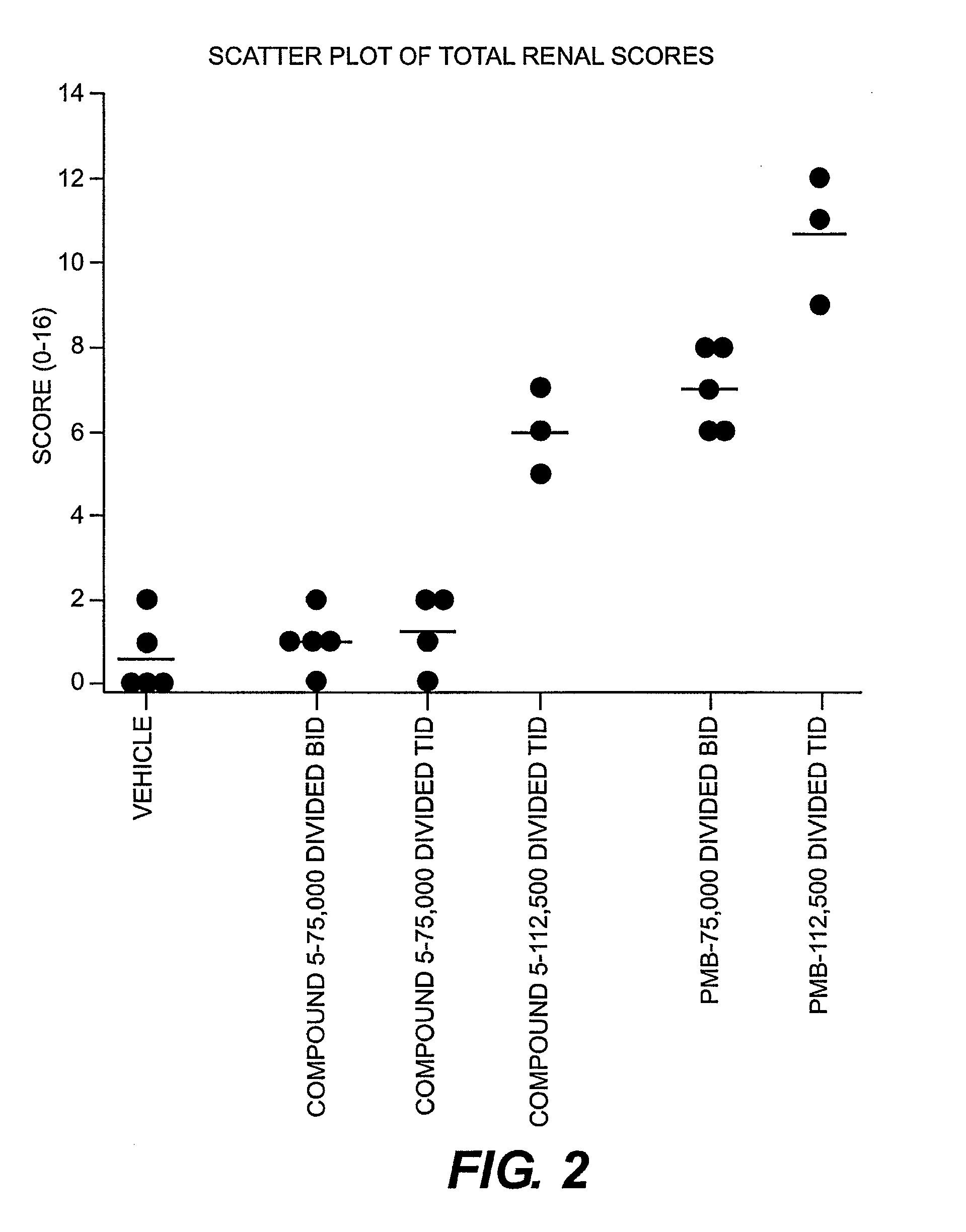Antibiotic compositions for the treatment of gram negative infections
a technology for gram negative infections and compositions, applied in the field of antibacterial compounds, can solve the problems of limited methods, limited use, and often only susceptible bacteria, and achieve the effect of lowering toxicity
- Summary
- Abstract
- Description
- Claims
- Application Information
AI Technical Summary
Benefits of technology
Problems solved by technology
Method used
Image
Examples
example 1
Preparation of the Deacylase
[0103]The deacylase is produced by culturing Actinoplanes utahensis NRRL 12052 under submerged aerobic fermentation conditions. The fermentation protocol employed is known (Boeck, L. D. et al., Journal of Antibiotics 41:(8), 1085-1092 (1998), incorporated herein by reference). A stock culture of the NRRL 12052 variant, preserved in 20% glycerol at −70° C., was introduced into a 25×150 mm test tube with a glass rod and Morton closure containing 10 mL of a medium composed of sucrose 2.0%, pre-cooked oatmeal 2.0%, distiller's grains and solubles 0.5%, yeast extract 0.25%, K2HPO4 0.1%, KCl 0.05%, MgSO4.7H2O 0.05% and FeSO4.7H2O 0.0002% in deionized water. After incubation at 30° C. for 72 hrs on a rotary shaker orbiting at 250 rpm the resulting mycelial suspension was transferred into 50 mL of PM3 medium in a 250 mL Erlenmeyer flask. This medium contained sucrose 2.0%, peanut meal 1.0%, K2HPO4 0.12%, KH2PO4 0.05% and MgSO4.7H2O 0.025% in tap water. The flask ...
example 2
Preparation of Compounds of Formula I
Step (a): Preparation of Penta-9-(2-sulfo)fluorenylmethoxycarbonyl-Polymyxin B
[0105]Fluorenylmethoxycarbonyl N-hydroxysuccinimide (1.1982 g, 3.55 mmol) dissolved in 15 mL of methylene chloride was stirred in an ice bath, using a drierite tube to maintain a dry atmosphere. A solution of chlorosulfonic acid (0.21 mL, 3.15 mmol) in 6 mL of methylene chloride was added dropwise to give a yellow solution. The mixture was allowed to come to room temperature and stirred for several hours. The resulting white precipitate was filtered and washed with cyclohexane-methylene chloride (1:1) then dried in vacuo over phosphorus pentoxide to afford 9-(2-sulfo)fluorenylmethoxycarbonyl N-hydroxysuccinimide (HSO3Fmoc-O-Su). Yield 1.148 g, (hygroscopic white solid). See, e.g., Y. Shechter et al. J. Med. Chem., 43, 2530 (2000).
[0106]Polymyxin B, containing a mixture of polymyxin B1 and [Ile7] polymyxin B1 (1.0 g, 0.841 mmol), as purchased from Sigma-Aldrich, was diss...
example 3
Isolation and Purification of Compounds 5 and 6
Preparation of CM-Sepharose Cartridge
[0112]Fast Flow a carboxymethyl agarose (e.g. sold under the tradename, CM-SEPHAROSE) slurry (100 mL sample) was diluted with approximately 100 mL of 20% EtOH. Approximately 30 mL of the dilute slurry was poured into a 60 mL polypropylene solid phase extraction tube and the slurry was allowed to settle. The top frit was carefully put in place to exclude air bubbles to obtain final packing bed dimensions of 22×26.5 mm. The excess 20% EtOH was decanted and the packing was rinsed by gravity flow with 60 mL of Solvent A.
Product Isolation
[0113]The diluted reaction mixture was applied to the cartridge and allowed to flow in by gravity. The product-loaded cartridge was rinsed with 60 mL Solvent A and then rinsed with 24 mL of 0.05 M ammonium acetate at pH 5.0. The cartridge was stripped with 32 mL of 0.27 M sodium sulfate pH 2.3 buffer (1:2 dilution of Stock Buffer A, see below). 4 mL fractions (#4 through ...
PUM
| Property | Measurement | Unit |
|---|---|---|
| temperature | aaaaa | aaaaa |
| pH | aaaaa | aaaaa |
| pH | aaaaa | aaaaa |
Abstract
Description
Claims
Application Information
 Login to View More
Login to View More - R&D
- Intellectual Property
- Life Sciences
- Materials
- Tech Scout
- Unparalleled Data Quality
- Higher Quality Content
- 60% Fewer Hallucinations
Browse by: Latest US Patents, China's latest patents, Technical Efficacy Thesaurus, Application Domain, Technology Topic, Popular Technical Reports.
© 2025 PatSnap. All rights reserved.Legal|Privacy policy|Modern Slavery Act Transparency Statement|Sitemap|About US| Contact US: help@patsnap.com



